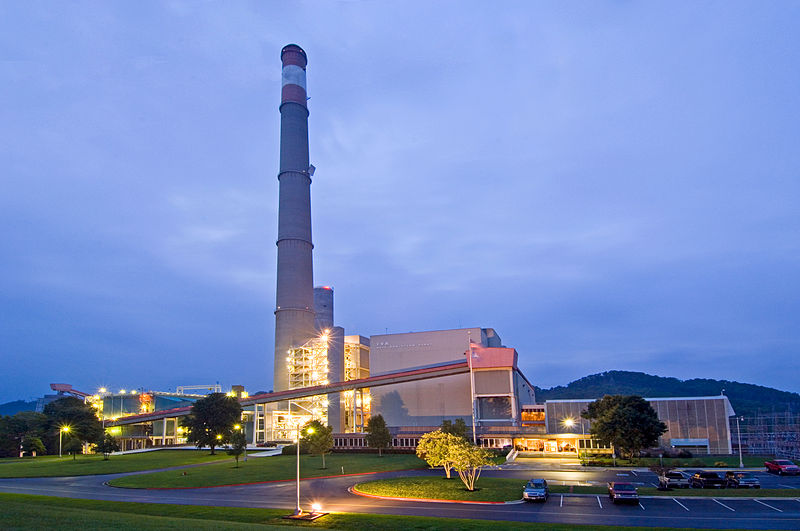Type One Energy wants to build a stellarator at retired coal plant

Type One Energy Group announced plans on February 21 to relocate its headquarters from Madison, Wis., to the Tennessee Valley Authority’s (TVA) Bull Run fossil plant in Clinton, Tenn., where it will build a stellarator fusion prototype machine. According to the company, the construction of the stellarator—called Infinity One—could begin in 2025, if necessary environmental reviews, partnership agreements, permits, and operating licenses are all in hand.
Project Infinity: A triparty memorandum of understanding signed in 2023 among TVA, Type One, and Oak Ridge National Laboratory has yielded Project Infinity. The three parties recognize “that fusion has the potential to become an attractive carbon-free power generation technology” and have “an interest in the successful development and commercialization of economic and practical fusion energy technologies.”
For now, Project Infinity encompasses the deployment of Infinity One and Type One’s new headquarters, and it is the first recipient of funds from the Tennessee Gov. Bill Lee’s Nuclear Energy Fund, the fusion company has said. In partnership with TVA and ORNL, Type One will “explore subsequent opportunities to further advance commercial deployment of fusion energy in the East Tennessee region.” Infinity One is part of that plan, because it is designed to verify features of a high field stellarator fusion pilot plant concept, particularly—in the words of Type One—those related to operating efficiency, reliability, maintainability, and affordability.
More on Type One Energy: Nuclear Newswire profiled Type One Energy last summer shortly after it was named one of eight fusion developers selected by the Department of Energy to receive a total of $46 million in funding to kick off a public-private Milestone-Based Fusion Development Program.
Type One was spun out from the University of Wisconsin–Madison in 2019. Its current headquarters, located near that campus, houses the Helically Symmetric Experiment (HSX), the world’s only modular coil stellarator optimized for quasihelical symmetry.
The company previously received support from the DOE’s Office of Science, including $2.4 million in 2020 through ARPA-E’s BETHE (Advanced Research Projects Agency–Energy’s Breakthroughs Enabling Thermonuclear-Fusion Energy) program for work on a demo-scale HTS stellarator magnet with metal 3D-printed assemblies, done in collaboration with the MIT Plasma Fusion Science Center and UW–Madison. In January 2023, Type One received an INFUSE (Innovation Network for Fusion Energy) award to work with ORNL to qualify materials for fusion applications for use with additive manufacturing.
ARPA-E’s description of Type One’s recent BETHE project lists the challenges the company hopes to address through additive manufacturing. “Stellarators have been expensive and time consuming to build. Their large and complex electromagnets need to be shaped, supported, and positioned with precision. . . . This project will reduce the highest initial risks of building a nonplanar HTS magnet by demonstrating whether HTS cable windings for an actual stellarator design maintain the needed tolerances and superconducting-current properties with three-dimensional bend radii as low as 10 cm. Success in this project will allow follow-on efforts to build a prototype nonplanar HTS magnet coil to enable a stellarator development path to lower-cost fusion energy.”
They said it: “Successful deployment of Infinity One in East Tennessee, with our partners TVA and ORNL, is a critical milestone in our FusionDirect commercialization program. It is also a watershed moment toward the commercialization of fusion, linking for the first time leaders in the technology, utility, and national laboratory sectors on an actual deployment project,” said Type One chief executive Christofer Mowry. “Project Infinity will create the world’s highest-performance stellarator, offering an excellent platform for a potential long-term fusion research facility.”
“TVA is working with our partners to pursue new ideas and innovative solutions that meet growing energy demand in real-world conditions,” said TVA president and CEO Jeff Lyash. “We appreciate this partnership between Type One Energy, ORNL, our local power companies, and elected and economic development officials as we work together to identify energy technologies for the future.”
“It’s exciting to see a project in Oak Ridge with such great potential to advance fusion energy,” said ORNL director Stephen Streiffer. “The laboratory has been a pioneer in fusion science and technology dating back to the early 1950s. We look forward to applying our institutional expertise and capabilities in working with Type One Energy on the engineering challenges they will be tackling at this new test facility.”
On the site: The Bull Run fossil plant is located on 750 acres in Anderson County, Tenn., on the north bank of Bull Run Creek, directly across the Clinch River from Oak Ridge.
When the Bull Run fossil plant began operations in 1967, it was the largest single-generator coal-fired power plant in the world in the volume of steam produced, according to TVA. In 2019, TVA’s Board of Directors approved the plant’s retirement by December 2023.
Bull Run employed about 60 area residents as a coal fired power plant. Once Type One Energy establishes its headquarters there, it expects to create 300 high-paying jobs within five years.








